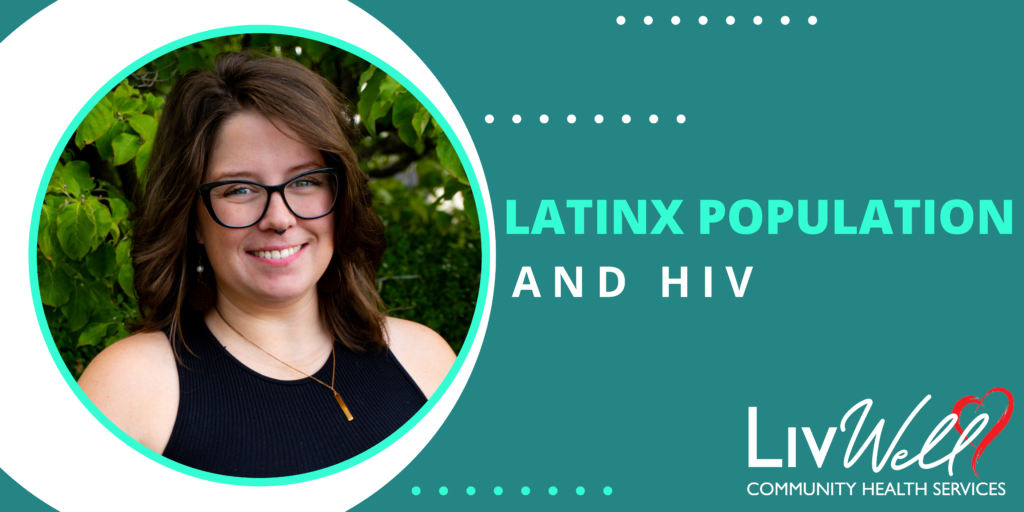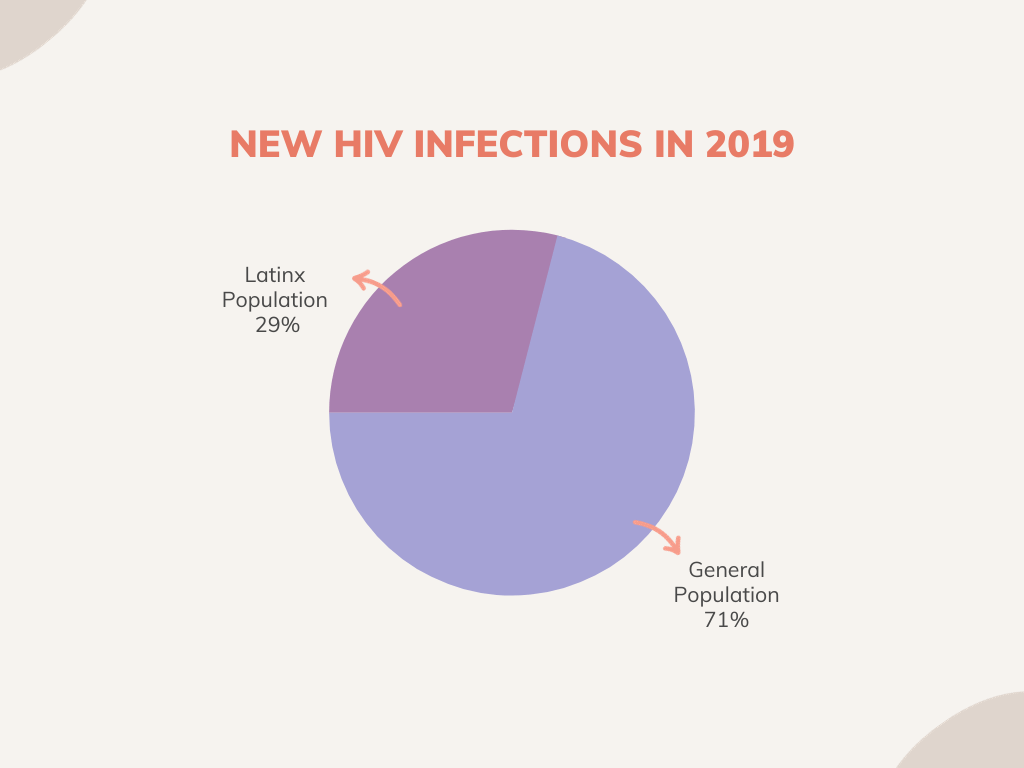
October 15th marks National Latinx AIDS Awareness Day, so this month, we are going to continue our journey of HIV Intersectionality with a focus on the Hispanic population. The Latinx community makes up about 17% of the US population, yet accounted for close to 30% of newly diagnosed HIV infections in 2019.
Not only are we seeing a high percentage of new infections in the Latinx population, as of 2019, the Latinx community made up 24.5% of the United States total estimated 1.2 million individuals living with HIV. Taking it a step further, HIV positivity rates are 3.2 times higher in Latinx men and 5 times higher in Latinx women than their white counterparts (Center for Disease Control and Prevention, 2023).
As we have learned, there is not just one contributing factor to positivity rates within the Latinx population. Not only does the Hispanic population have higher HIV rates, but they are also the most uninsured community in the United States with 28% of adults, age 18-64 having no health insurance coverage (Center for Disease Control and Prevention, 2023).
In light of the high uninsured rate, the Latinx Community lean inward, a term called “familismo”. Familismo recognizes the importance of the family at all levels, and the needs of the family are placed above the needs of the individual (Medina, n.d.). The Latinx Community is also seen to be hierarchical, allowing this structure to sustain the family socially, emotionally, financially, and in other forms of support. With these two traits of the Latinx Community, seeking medical treatment does not fit within the roles, traditions, or expectations of the family structure, especially in prevention or early intervention aspects.
The Latinx Community is also, historically, deeply religious with an estimated 43% of adults identifying as Catholic (Krogstad, 2023). Knowing this, it is important to recognize the Catholic Churches views on sex; all people are called to be chaste, even in marriage, living modestly and wholesome. It is also believed that sex has a fundamental purpose: procreation (Armstrong, 2018). With HIV being primarily transmitted through intercourse, there is fear that an individual will potentially be admitting not living a life of chastity to be tested. The desire to live a chaste life not only influences those desiring to marry, it also effects members of the Latinx Community that identify as LGBTQ+. The Catholic Church has made the distinction that being part of the LGBTQ community is not the sin, however, acting on those desires is (HRC Foundation, n.d.). Again, this is another area which the Latinx Community experiences barriers in accessing HIV testing.
So, what do we do? Making HIV testing part of routine health care is one of the best ways we overcome stigma related to testing and treatment. When we, as a society, begin to see HIV testing as common practice, individuals will no longer fear their personal lives being revealed to their friends, family or community. Making the private health of those in our community safe is necessary to positively influence the public health of our state and nation.
If you are curious about your HIV status, click here to find locations in your area to get tested, or come to a LivWell Community Health Services testing event; you’ll find an updated calendar of events on our Facebook page each month.
-Alexa Griffin, MSW
- Centers for Disease Control and Prevention. (2023, June 30). FastStats – health of Hispanic or Latino population. Centers for Disease Control and Prevention. https://www.cdc.gov/nchs/fastats/hispanic-health.htm
- Medina, C. (n.d.). Belief and traditions that impact the Latino Healthcare. deltaatec.org. https://www.medschool.lsuhsc.edu/physiology/docs/Belief%20and%20Traditions%20that%20impact%20the%20Latino%20Healthcare.pdf
- Krogstad, J. M. (2023, April 13). Among U.S. Latinos, Catholicism Continues to Decline but Is Still the Largest Faith. Pew Research Center’s Religion & Public Life Project. https://www.pewresearch.org/religion/2023/04/13/among-u-s-latinos-catholicism-continues-to-decline-but-is-still-the-largest-faith/
- Armstrong, D. (2018). Sex and Catholics: Our Views Briefly Explained. NCR. https://www.ncregister.com/blog/sex-and-catholics-our-views-briefly-explained
- HRC Foundation. (n.d.). Religion and Coming Out Issues for Latinxs. Human Rights Campaign. https://www.hrc.org/resources/religion-and-coming-out-issues-for-latinas-and-latinos

